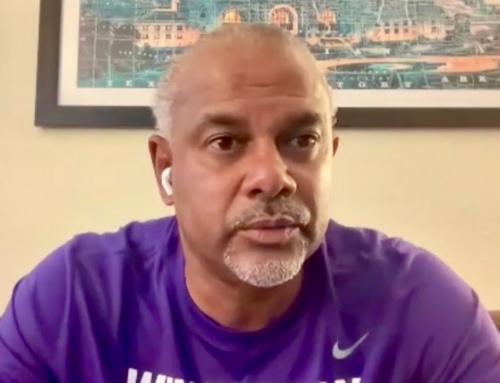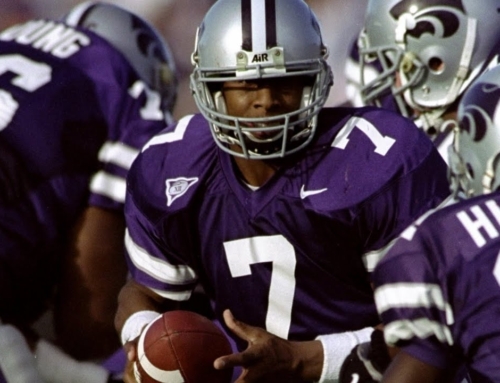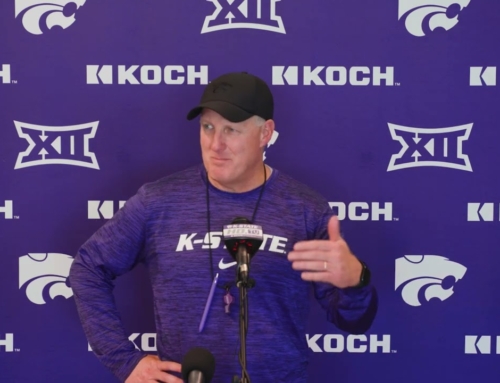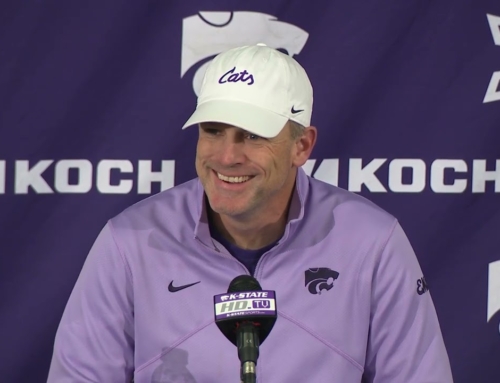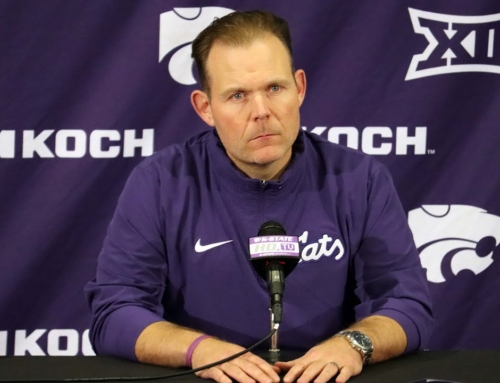Speaking to the larger community about issues “many would seek to avoid”, the Manhattan Nonviolence Initiative’s third “Conversations on Race & Reconciliation” fostered an environment of understanding and mutual trust to express beliefs free of judgment so that the community may work together to address and overcome tensions raised by the deaths of People of Color at the hands of police brutality and mass shootings.
In the preview session, Director Susanne Glymour said these conversations intended to allow an opportunity, “to talk with someone who’s maybe living in a very different neighborhood, has that different experience, in an exchange of very personal firsthand life in Manhattan.”
Manhattan MLK Committee member Kevin Bryant stated that this offers transparency, not only important for law enforcement but the community as well to understand what responses they’re going to get, and raising the issue of talking to mental health professionals, to help turn around negative interactions to then make outcomes positive.
Mirroring this, the meeting was not recorded to give people the sense of safety that they can speak freely and from the heart. Facilitators then would take insights that show up in conversation and bring them back to the whole group so that everyone who has participated will get to hear some of those key take away. KMAN was allowed permission to use quotes from some of the participants on the basis their names would be kept anonymous. Their comments are provided below.
“True change always comes through building relationships. This is a great opportunity to build relationships and I look forward to continuing this conversation.”
As conversations first began, community members were asked to watch a video that was previously recorded of conversations about creating a safer community, how to address the hard conversations that are presently needed, and responsible policing.
Those from the video expressed that often they felt safer when they had their children or wife even as a lawfully armed police officer, they desire to travel freely without consequence, fostering trust comes from those officers they personally know versus those using people as a source of information, they desire to be treated humanly and no different than anyone else, and the perception as a parent that one day the world will no longer see their children as “cute” but as a “threat”.
“We had a great conversation. I reported that, as a white person, I have experienced really good treatment from police officers throughout my life. But I know that it is not the experience of African Americans. And I heard the stories from my African American group members about their experiences of being pulled over and questioned by police officers locally for no reason. It was really meaningful for me to hear those personal stories from our community. It is different from hearing about what has happened in Detroit, or New York, or Atlanta. This was in Manhattan, Kansas.”
This prompted conversations to be carried out in breakout rooms with trained facilitators who directed conversations over the images and thoughts conveyed during those earlier dialogues. Those in attendance were asked to introduce themselves and their reasoning for joining the event, with many voicing their desire to learn from other’s experiences, and then carry lessons learned over to their jobs and personal lives to try to find ways to change.
Exposing each person’s experiences, those in attendance were able to showcase why they had a certain reception of police and their impact on the community at large. Whether it was how the police actually looked in uniform, to how they engaged with the community, fostering trust was explained as coming from a place of not seeking something but instead offering. Connections were made beyond the community’s borders to the world at large and even the media’s representation of the specific incidents that have prompted protests nationally.
“We need more opportunities to meet in multi-cultural, multi-racial forums. This was a good chance to share our concerns, fears, experiences. Getting to know each other is the best way to melt away our racially based fears and stereotypes of each other.”
It was understood that on the one hand, the community wants to engage with and come to understandings with the police, but still have them understand why there is mistrust and why the road to cooperation together still has much to yet to achieve. This was paralleled by a common trend that fear is understood by all sides, but not for all the same reasons, many of which perpetuate the implicit bias many in the community carry with them.
One community member brought forward a poem by Paul Laurence Dunbar, called “We Wear the Mask” that speaks to the experience of African Americans navigating the social, emotional, spiritual, and economic difficulties intrinsically embedded in society. This was joined by peers who expressed that racism was damaging to all parties, both those who perpetrate it and also find themselves raised in an environment where it flourishes.
“Another theme that emerged was we have to have more than words, we need to learn to stay in difficult conversations, we need to take action constructively, we need to hold each other and our leaders/police accountable…”
In the separate press session, participants were asked how this event could get conversations going, what they feel to have taken from this event, when moments of contention arose how they navigated specific issues and reigned in the conversation to be able to gather a meaningful connection, and how the media can then portrait the issue of race and police brutality constructively.
The following excerpts were recorded with all participant’s consent without names or identifying their position in the community to maintain their anonymity:
“I think for me, these conversations. For one, they bring certain things that usually kind of lay dormant under the rug, to the forefront so that we can talk about them openly, in a safe space so that people don’t feel attacked, don’t feel judged for their perspective or their experiences. But I also think it’s really good so that we can identify allies as well in our community, who are some people that are willing to have these conversations, who are people that I want to put into work, who are some people that I can go to that might be resources if I’m trying to accomplish certain things. And so I think that that’s really good to be able to put some faces and names to people that we live around who are actually willing to do the work with us.”
“I like the fact that this was an opportunity for me to talk about opportunities that I would have to be an ally. So and to just hear, and I knew that I have white privilege. When we started talking about, you know, how do you help with the safety you feel in the community, and about policing, I reported I felt really well treated throughout my life by police. Sometimes, I didn’t entirely deserve it. I was able to hear, and I’ve heard all the stories about all the big cases, nationally, where black people were killed for no reason other than being black. But I was able to hear some stories from people locally about being pulled over for no reason and being followed by police just for being among a group of black women who were just walking in Aggieville. That really brought it home to me that it’s, it’s not just in these other places, it’s here in town too. I knew that intellectually, but that made it much more personally real because I’m hearing from the person I’m talking to my right, and they’re telling me their experience.”
“We are limited by our perspectives, so these conversations allow us the opportunity to share our experiences in a safe space. As I see these conversations, although many times they are uncomfortable for the person sharing and the person hearing them because anytime anybody in our community is oppressed, we are all oppressed and everybody suffers. So I see these conversations as the beginning of our community healing because it’s not a one and done. It’s not a let’s have a committee, let’s have a listening session, and then Tada, everything’s fixed. So these conversations are the beginning of figuring out where our community is hurting so that we can implement programs that allows us to work together and really change.”
“When we’re talking about how the fear is not the same, I think that everybody also in their fear does not want the same outcome. We had a gentleman in our group who was talking about his fear of the downfall and dismantling of law and order, and I asked, “What does law and order mean or look like to you, because that may not be the same thing that I’m looking for in terms of law and order”. Because if you’ve never had a negative experience with law enforcement, your idea of what a solution needs to be may be very different from someone who has.”
“When it comes to questions about what can be said, what can be done, I didn’t start the system so it’s not my job per se to dismantle it, because I didn’t put it together. I can help people get a better understanding of where I’m coming from, I can share my story, I can try to help people see things from my perspective, but I feel that is not my job or my duty to dismantle a system that I did not create, that has been used time and time again, to keep me from being a lot further if it wasn’t for my skin color or the fact that I’m a woman… Who are the people that are in positions to make and affect change, and what are they actually going to be willing to do, what are you willing to lose? A woman in our group said it’s easier for her to have the conversation and to check strangers than it was for a check people she has a history with. So my whole thing is if you consider yourself, my friend, or my ally, are you willing to you lose your social capital, are you willing to possibly lose your job, what are you willing to lose, to be an ally? This is serious business because people have lost their lives, their families, their homes, their businesses, their jobs. To me, I feel we’re still in a new civil rights movement because we have such a long way to go when you look at where we’ve come from… It’s exhausting work, you have to be the poster child for everybody black, and in a place like Manhattan where there are so few of us, it’s easy for someone to lump us but we’re not monolithic. We’re not all the same, so you have to approach us the same as you approach any human being and not make assumptions just because I’ve got more melanin. My family’s West African, so this is why I look the way I do. It’s an adaptation to the environment, but it’s not who I am.”
To learn more on the discussions previously carried out with the Manhattan Nonviolence Initiative, visit their website or YouTube.
The post Manhattan Nonviolence Initiative holds dialogue on Race, Justice, Safety and Policing appeared first on News Radio KMAN.


